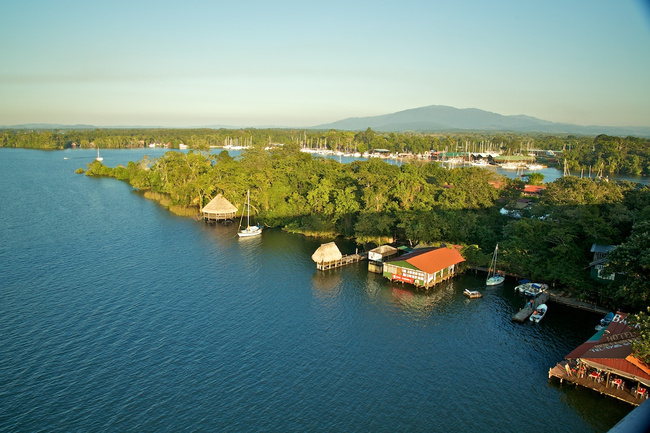
Lake Izabal
Lake Izabal is the largest lake in Guatemala. It’s still largely undeveloped, but that may change in the coming years as word gets out about its natural beauty and tranquil vibes.
More about Lake Izabal
Lake Izabal is located along the northeastern corner of Guatemala, some 18 miles (30 km) from the Caribbean Ocean. The town of Río Dulce (named for the river that flows east from here) occupies the easternmost boundary of the lake. The town of Río Dulce is actually made up of two towns, Fronteras and El Relleno, although that distinction is quickly fading. These days the town is mainly used as a transportation hub and access point for trips up the river and to the Caribbean town of Lívingston.
Not far from Fronteras is El Castillo de San Felipe, a castle built by the Spanish in 1652. The fortress was built as a deterrent for British pirates, who would sail up the Río Dulce to raid supplies. Later on, it served as a prison but was eventually abandoned; the current structure was reconstructed in 1956. It’s worth checking out—it has small rooms, old canons, and fabulous views of Lake Izabal.
The other end of the lake, near the westernmost boundary, is occupied by the Bocas del Polochic Wildlife Preserve. This park includes wetlands, savannas, and flooded forests. A wide variety of bird species live (or migrate through) the park; there are also some small populations of manatees and crocodiles onsite. Larger mammals include howler monkeys, tapir, and jaguars. The park is managed by a private conservation group, which has done a good job maintaining quality facilities and services within the park.
Along the lake’s north shore, between Río Dulce and El Estor, is a pleasant warm waterfall/hot springs at Finca El Paraíso. A 40-foot (12-m) warm-water fall descends into a pool that’s cooled by surrounding streams. There are also some caves above the falls that can be explored. It’s a very cool place.
A few miles east of El Estor is the limestone canyon of El Boquerón. The canyon can be explored via wooden canoe on the Río Sauce—the canyon’s 800-foot (250-m) walls are dramatic. There is a small beach near here that’s a pleasant place to relax.
As far as towns go, El Estor is set along the western shores of Lake Izabal. The town is home to a nickel mine and a variety of budget hotels. It’s positioning itself as a gateway for accessing the area’s natural attractions. On the other side of the lake is Mariscos, a quiet town that hosts a lovely lakeside resort.
We believe travel is more than ticking destinations off a list – it’s about discovering new places deeply, feeling connected wherever you go, and knowing you have a trusted team behind you every step of the way.



